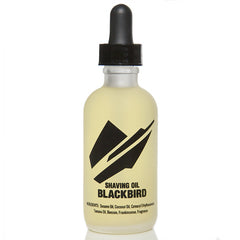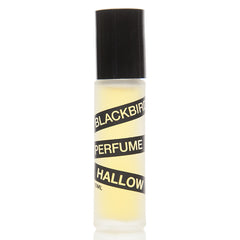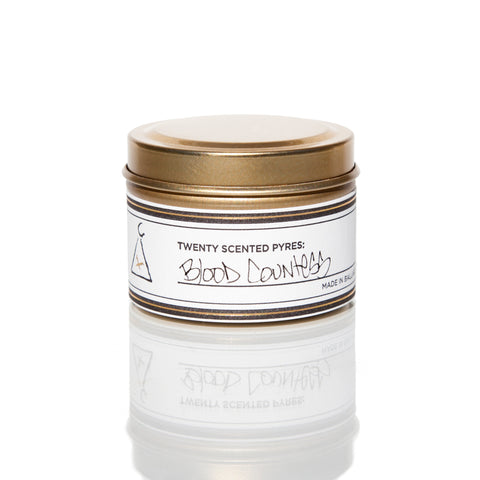PRESS
WHAT IS FRANKINCENSE?

Frankincense, a precious resin obtained from several different trees of the Boswellia genus, sometimes goes by the name olibanum from Arabic al-luban meaning "that which results from milking". It is most popularly known in Western culture as one of the three gifts brought by wise men for Jesus at his birth, but its history goes way further back (trading of frankincense has been recorded for more than 8000 years) and the ingredient is still a precious and widely used commodity today. Some of the best frankincense comes from Yemen and Somalia, where much incense used in Catholic mass is produced, and much frankincense also comes from Ethiopia. Dhofar, a region of Oman, is known for producing the best frankincense in the world.

Boswellia Sacra, translating loosely to religious or sacred Boswellia, is commonly known as the frankincense or olibanum tree and is known for its ability to grow in uncommonly unforgiving territory, even occasionally known to sprout from solid rock. Attaching to these rocks helps the tree stay planted during tumultuous storms. The trees grow abundantly in Oman and southern Yemen, and they typically reach a height of 2 to 8 meters with one or more trunks. The trees don't actually begin producing resin until they are about 8 to 10 years old.

Frankincense is available in four different grades depending on when the harvest happens. It is accessed by making an incision on the trunk or branches of the Boswellia trees and removing a narrow strip of bark, letting the resin bleed out as a milky substance and become hard upon contact with air, creating frankincense "tears." This process is then repeated making a deeper incision until enough frankincense has been produced at the right consistency, usually over a three month period. The best quality comes from the 2nd or 3rd annual bleeding of the tree, and generally speaking the more opaque resins are higher quality. Silver and Hojari are generally the highest grades of incense, and there is some dispute as to which type is better. The highest quality of frankincense from Oman is purchased by His Majesty Sultan Qaboos bin Said, the ruler of Oman, and is almost impossible for western buyers to identify and purchase.
Frankincense comes from the Old French word, "franc encens," meaning high quality incense. The greeks and romans, babylonians and assyrians used frankincense in religious ceremony to make offerings to the gods, and it was very popular for this use, but it was also used in state and domestic affairs. Egyptian women used crushed, burnt frankincense like eyeliner to paint their eyelids, although it was also used to scent rooms in the colder months, served as insect repellent, salves for wounds and sores, and was used as a key ingredient in the embalming process.
Frankincense resin is edible and is sometimes used as medicine for digestion and healthy skin. For internal consumption, only translucent frankincense is recommended, with no black or brown impurities. It is often light yellow with a very slight greenish tint and it is often chewed like gum, but it is stickier. Indian frankincense, commonly called dhoop, has been used for hundreds of years for treating arthritis, healing wounds, strengthening the female hormone system, and purifying the air. It is suggested that burning frankincense daily in the house brings good health. Frankincense smoke has been shown in some preliminary studies to relieve depression and anxiety, and consumption of the extract has been shown in some preliminary studies to improve arthritis in as little as seven days. In 2009 it was reported that Frankincense oil appears to distinguish cancerous cells from normal bladder cells and suppress cancer cell viability. In antiquity it has been known to be used for leprosy, and toothaches, and more recently it has been proven to possess antiseptic and anti-inflammatory properties. Frankincense has also been investigated as a potential treatment for ulcerative colitis, Crohn's disease, anxiety and asthma.
Recently a component of frankincense, AKBA, shown to kill cancer cells in brain tumors and particular cells affected by leukemia or colon cancer, has been successfully isolated. That said, the component has not yet been tested on humans and the claims of the Omani media that a cure for cancer has been found have been denied by the researchers behind the project.
Unfortunately, like so many important pieces of plant and animal life, frankincense is at risk of becoming significantly less prevalent (decreasing by 90%) due to over harvesting. When a frankincense tree is milked, it produces less seeds, and because of the world's high demand for frankincense, a huge number of these trees are being milked several times a year and as a result they are not reproducing as much as they would naturally. If we don't adopt more sustainable harvesting methods, we may not have frankincense for very much longer (tear).
Frankincense smells balsamic-spicy-sweet, with a slightly lemon-like fragrance of incense and a conifer-like undertone. As a perfume ingredient, frankincense is one of our absolute favorite materials to work with due to its incredibly rich, unique, and pleasant fragrance, but we have also employed the ingredient in our products for some of its other beneficial traits. You can try frankincense today in the following Blackbird products:
WHAT IS DRAGON'S BLOOD?

Dragon's Blood is rad for many reasons, one of which being that it actually looks like how you might expect "Dragon's Blood" to look. The resin was named after its red appearance that when heated or used as incense, bubbles and boils red like blood, and was accompanied by a common belief that Dragon's Blood actually came from the blood of elephants and dragons who had died in combat.
Dragon's Blood is a bright red resin that is produced by several different species of trees that's use has been documented as far back as the 15th century. One type of Dragon's Blood tree produces a berry about the size of a cherry and when ripe, they are covered with a reddish, resinous substance. Other types of Dragon's Blood trees produce Dragon's Blood resin directly through their sap. These trees have been known to grow in the Canary Islands, Morocco, Sumatra, and other locations, and Dragon's Blood made its way into Europe largely by the Incense Road.

It has been implemented throughout history for a surprising number of uses, including being used to make varnish for violinmakers, dye, toothpaste, ink for posters in China, as well as to make medicines because of its large list of perceived health benefits and in witchcraft, shamansim, and folk magic for its "magical properties."
On top of all of the various uses listed above, the most important piece of information to us is the scent of dragon's blood. Dragon's Blood smells sweet and soft, slightly amber-like but more natural and less sticky/sweet smelling than common amber. It is extremely rich and does an excellent job setting a calming mood to a space.
Try Dragon's Blood today in our Blood Countess Incense, and let us know what you think!
Or you can bathe in Dragon's Blood with our new Australian red reef clay Blood Countess Square Soap.
WHAT IS TAMANU OIL?

What's Tamanu Oil? We know it as a wonder-ingredient used in our Shaving Oil to help protect and rejuvenate your skin after and throughout the process of shaving, but this stuff has an ancient history of being used for a seemingly endless list of benefits, and shaving oil was definitely not the first treatment to contain it.
|
Used against
|
Good for
|
Anti-
|
Try Tamanu Oil in our brand-new Blackbird Shaving Oil for a smoother, more comfortable, and healthier shave.
 Skip to content
Skip to content






